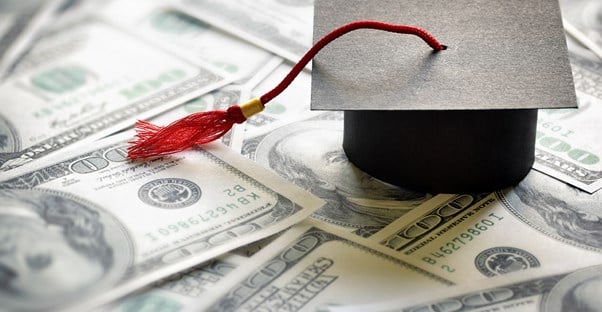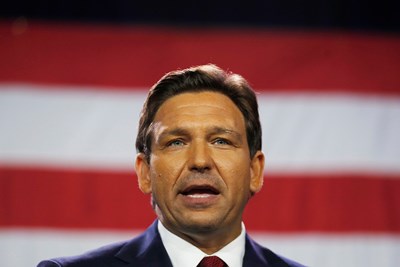Student loan debt is one of the biggest financial burdens that Americans face today. According to Forbes, over 44 million Americans have student loan debt, which totals over $1.7 trillion. That's more than credit card or auto loan debt. Only 20% of Americans have reported paying theirs off in full, as reported by the Education Data Initiative.
President Biden aims to help alleviate this burden through a new student loan forgiveness plan despite an initial one-time plan that was rejected by the Supreme Court. Sourced from StudentAid.gov, this article answers two key questions: (1) Do You Qualify and (2) How to Apply? If you have further questions, refer to the Department of Education’s website.
What is the New Student Loan Forgiveness Plan?
On January 19, 2024, President Biden introduced another $5 Billion additional student debt cancellation plan for 74,000 borrowers who have dedicated 10 years of public service, have been in repayment for at least 20 years, and select SAVE plan borrowers.
Biden's original three-part student loan forgiveness plan was rejected, so he was forced to pivot in order to fulfill key campaign promises. Previously, he targeted low-and-middle-income individuals who have federal student loans and will forgive up to $20,000 for Pell Grant recipients and up to $10,000 for non-pell grant qualifiers.
Due to the 2020 COVID pandemic, the Biden-Harris Administration paused student loan repayments for 3 ½ years. However, that pause recently ended in September 2023 because Congress passed a law preventing further extensions. Target CFO Michael Fiddelke said back in August that "the upcoming resumption of student loan repayments will put additional pressure on the already strained budgets of tens of millions of households.”
Fortunately, borrowers – especially those at the highest risk of delinquency or default – have multiple options to address their student debt, including Saving on a Valuable Education (SAVE) Plan.
Who Qualifies for the New Plan?
- You have worked full-time in public service for 10 years and made 120 qualifying payments on your federal student loans.
- You’re a teacher in a low-income school or at an educational service agency for five consecutive years.
- You’re a nurse or nurse faculty member serving a high-need population in a critical shortage area.
- You qualify for Perkins loan cancellation.
- You’ve experienced a total and permanent disability.
- You have another qualifying reason for student loan discharge, such as being defrauded by your school.
- You make payments for 20 or 25 years on an IDR plan.
- You are enrolled in a SAVE Student loan repayment plan, took out less than $12,000 in loans, and have been in repayment for 10 Years
How to Apply for the New Plan?
Applying for financial aid depends on which plan you are legally allowed to pursue. If you qualify for loan forgiveness under PSLF, Teacher Loan Forgiveness, or IDR discharge, the loan servicer or Department of Education will send you a letter or electronic mail, depending on your account settings. It will provide the amount of forgiveness you have earned and the date the loans were discharged.
Here are the following options, as described by Forbes:
- Public Service Loan Forgiveness (PSLF): To apply for PSLF, use the PSLF Help Tool to generate and submit the PSLF & Temporary Expanded PSLF (TEPSLF) certification and application to your loan servicer. Submit this form annually, and when the 10 years are up, you’ll submit a final PSLF form to federal student loan servicer MOHELA.
- Teacher Loan Forgiveness: Submit a Teacher Loan Forgiveness Application to your loan servicer(s). It requires the chief administrative officer of your school to complete the certification section.
- Nurse CORPS Loan Forgiveness: Apply through the Health Resources & Services Administration’s (HRSA) site.
- IDR plan forgiveness: After 20 or 25 years in repayment, loans should automatically qualify for forgiveness. Reach out to your loan servicer for further details.
Total and permanent disability (TPD) discharge. Borrowers with a total and permanent disability may get an automatic discharge of their student loans. Complete a TPD discharge application along with supporting documentation from the U.S. Department of Veterans Affairs (VA), the Social Security Administration (SSA), or a medical professional.
Beware of Scams
If you are contacted by a third-party company promising a “loan discharge, forgiveness, cancellation, or debt relief for a fee,” it is a scam. Never pay for help with your federal student aid. Official ED and loan servicers are the only reliable servicers.
The increasing issue of student loan debt affects many. Hopes are high for President Biden's upcoming student loan forgiveness program intended to relieve pandemic-induced economic stress. Further details are still to be announced. The White House released a statement, including Biden’s personal dedication to the plan:
“From Day One of my Administration, I vowed to improve the student loan system so that a higher education provides Americans with opportunity and prosperity – not unmanageable burdens of student loan debt. I won’t back down from using every tool at our disposal to get student loan borrowers the relief they need to reach their dreams.”
Visit StudentAid.org or the Department of Education for further information.




